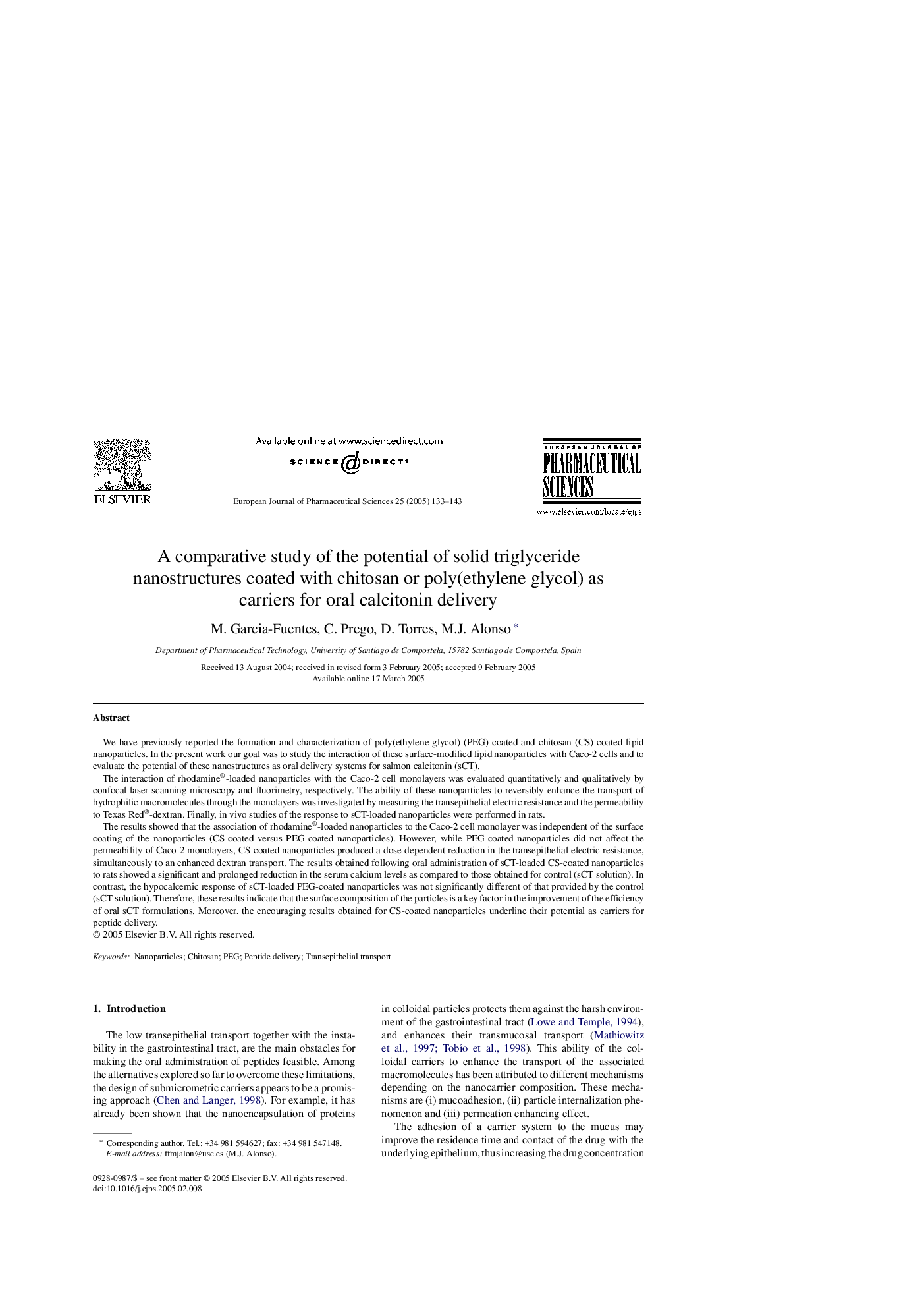| Article ID | Journal | Published Year | Pages | File Type |
|---|---|---|---|---|
| 9917700 | European Journal of Pharmaceutical Sciences | 2005 | 11 Pages |
Abstract
The results showed that the association of rhodamine®-loaded nanoparticles to the Caco-2 cell monolayer was independent of the surface coating of the nanoparticles (CS-coated versus PEG-coated nanoparticles). However, while PEG-coated nanoparticles did not affect the permeability of Caco-2 monolayers, CS-coated nanoparticles produced a dose-dependent reduction in the transepithelial electric resistance, simultaneously to an enhanced dextran transport. The results obtained following oral administration of sCT-loaded CS-coated nanoparticles to rats showed a significant and prolonged reduction in the serum calcium levels as compared to those obtained for control (sCT solution). In contrast, the hypocalcemic response of sCT-loaded PEG-coated nanoparticles was not significantly different of that provided by the control (sCT solution). Therefore, these results indicate that the surface composition of the particles is a key factor in the improvement of the efficiency of oral sCT formulations. Moreover, the encouraging results obtained for CS-coated nanoparticles underline their potential as carriers for peptide delivery.
Related Topics
Health Sciences
Pharmacology, Toxicology and Pharmaceutical Science
Drug Discovery
Authors
M. Garcia-Fuentes, C. Prego, D. Torres, M.J. Alonso,
